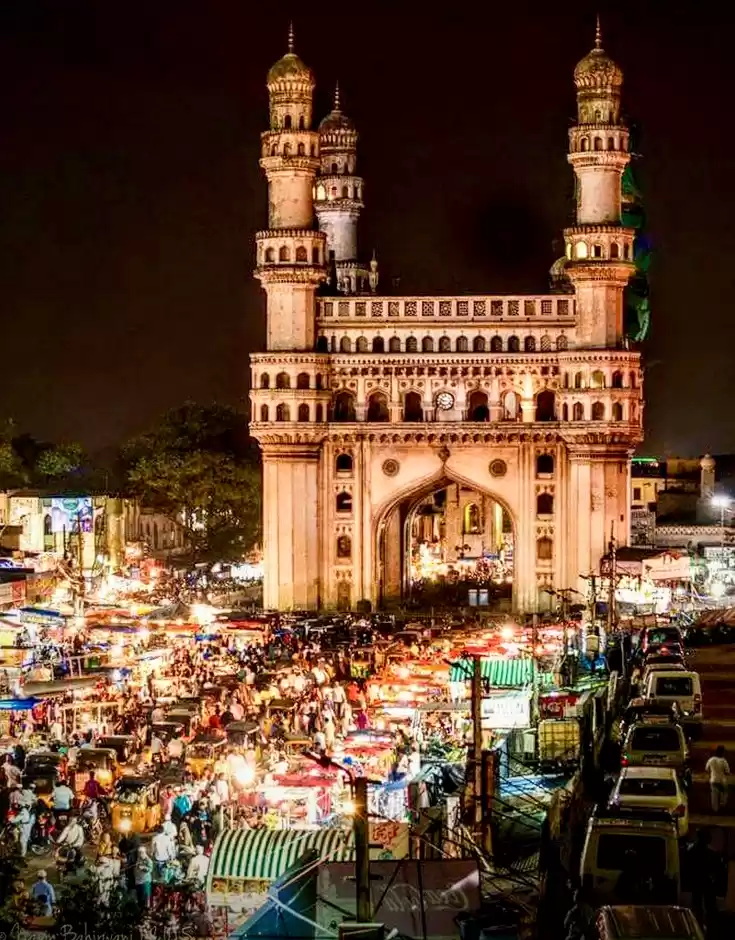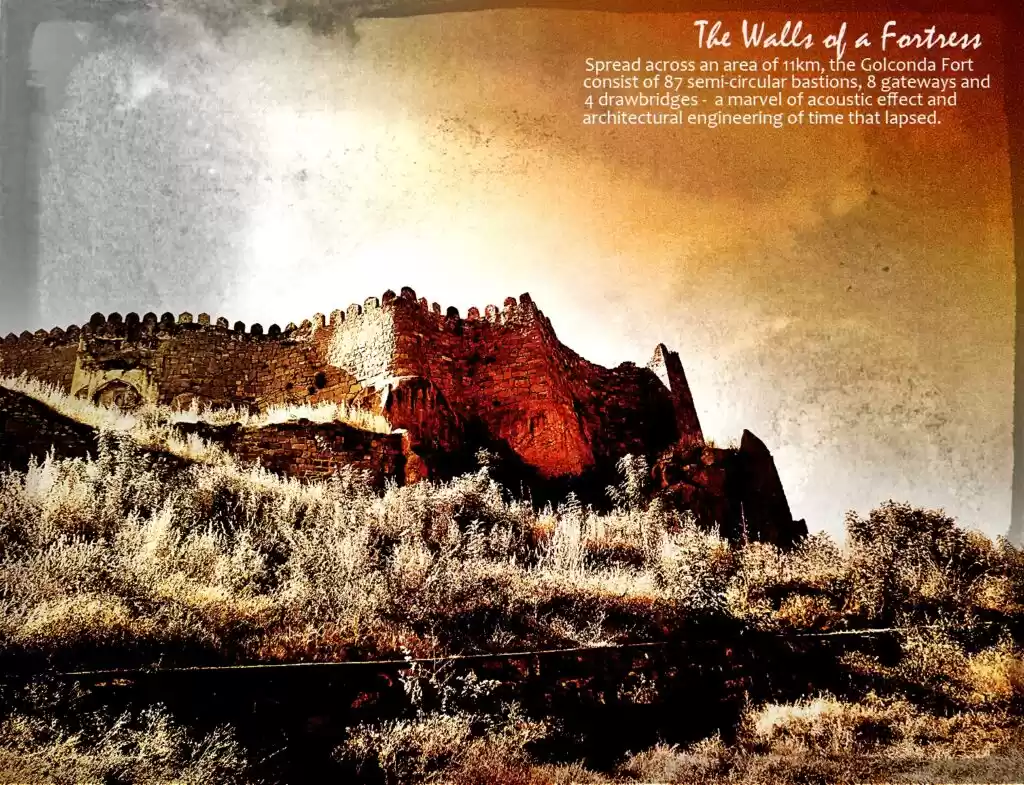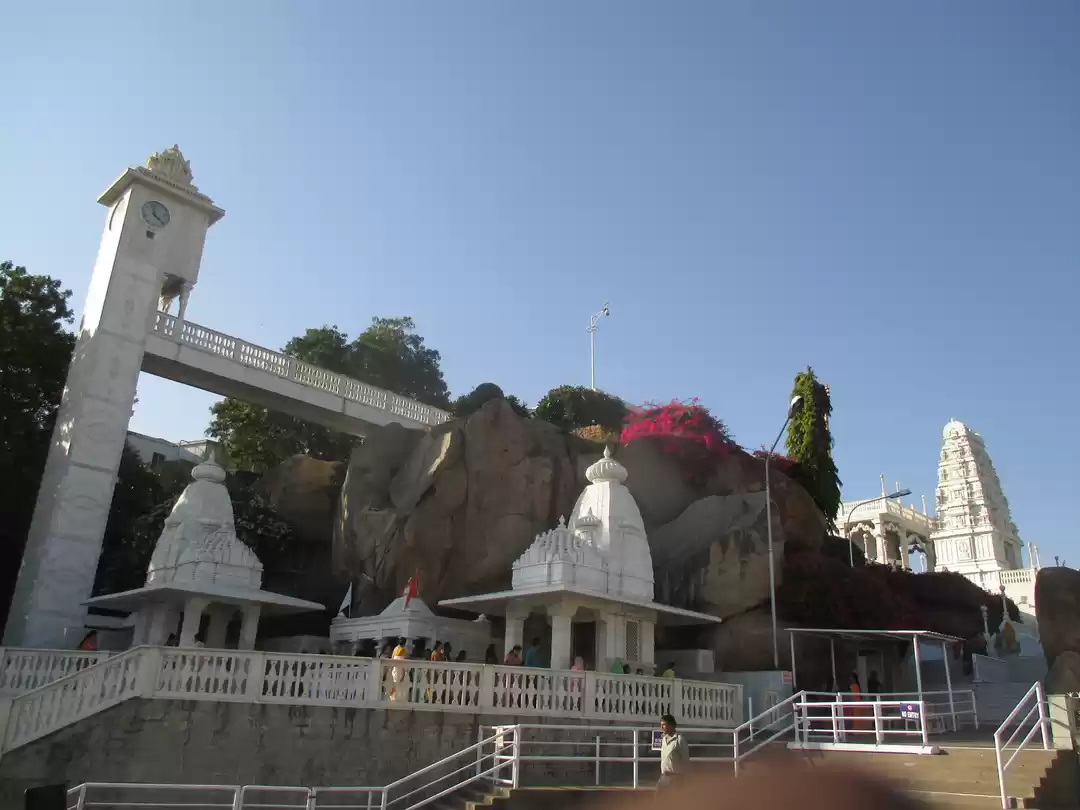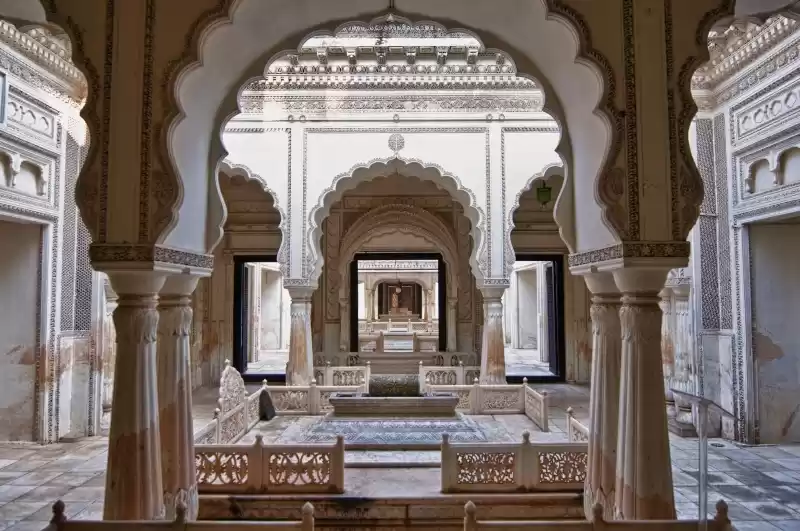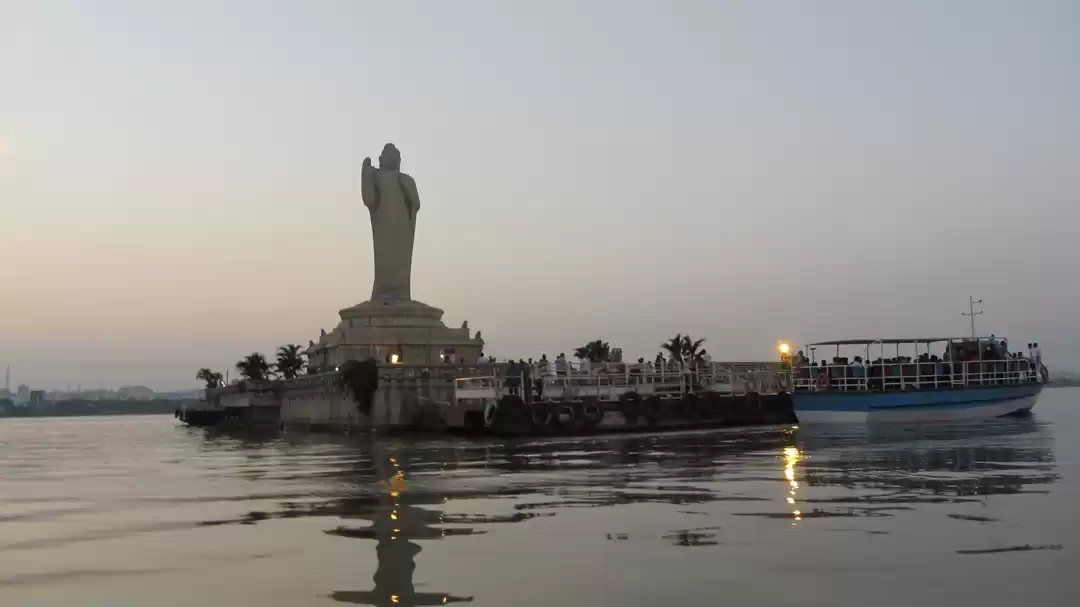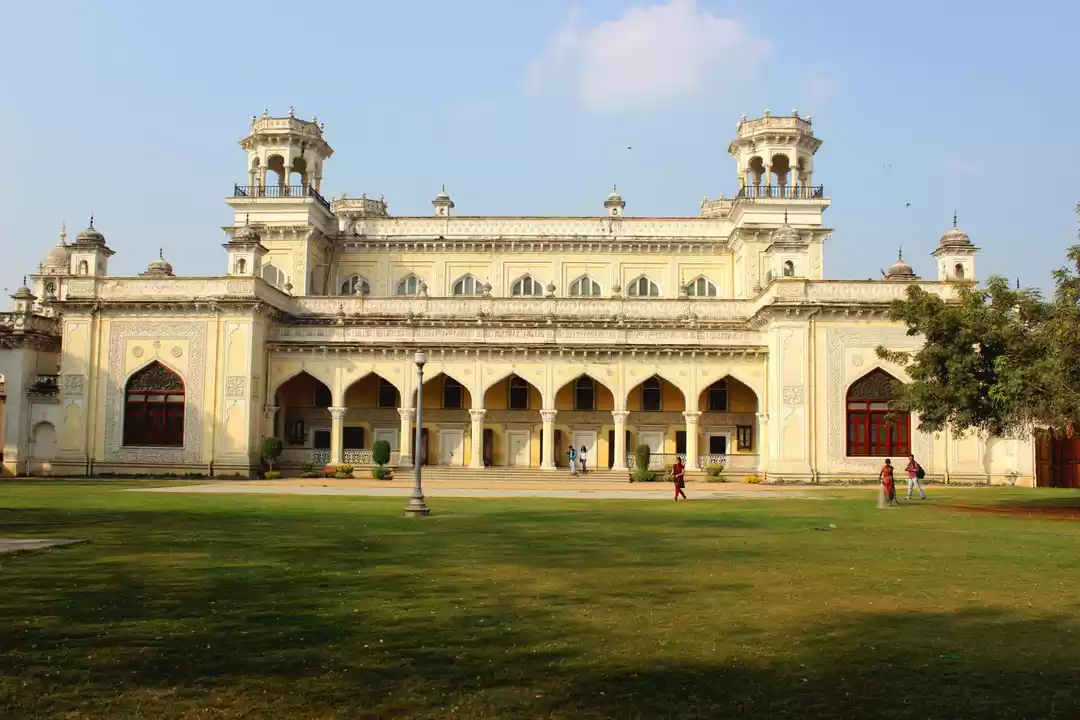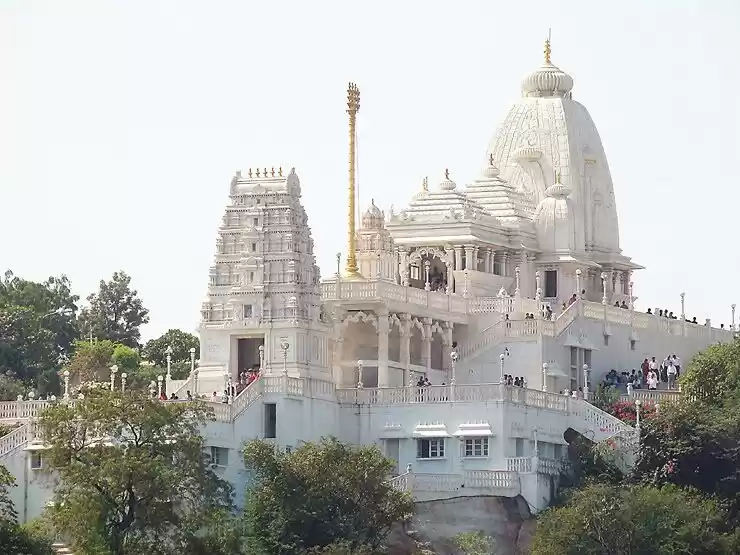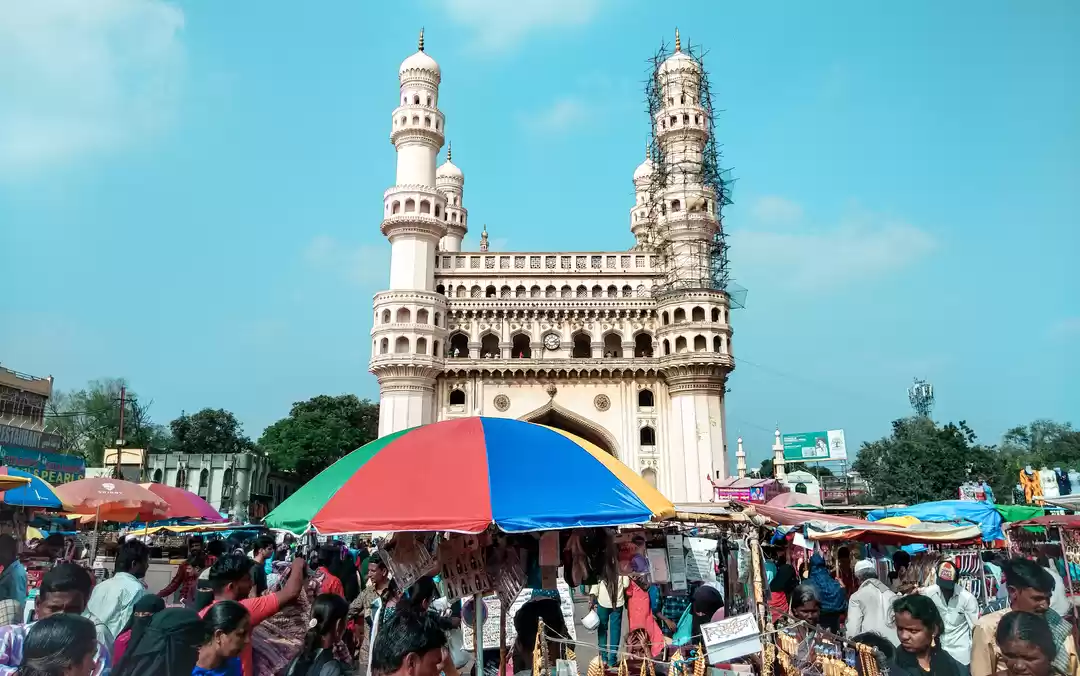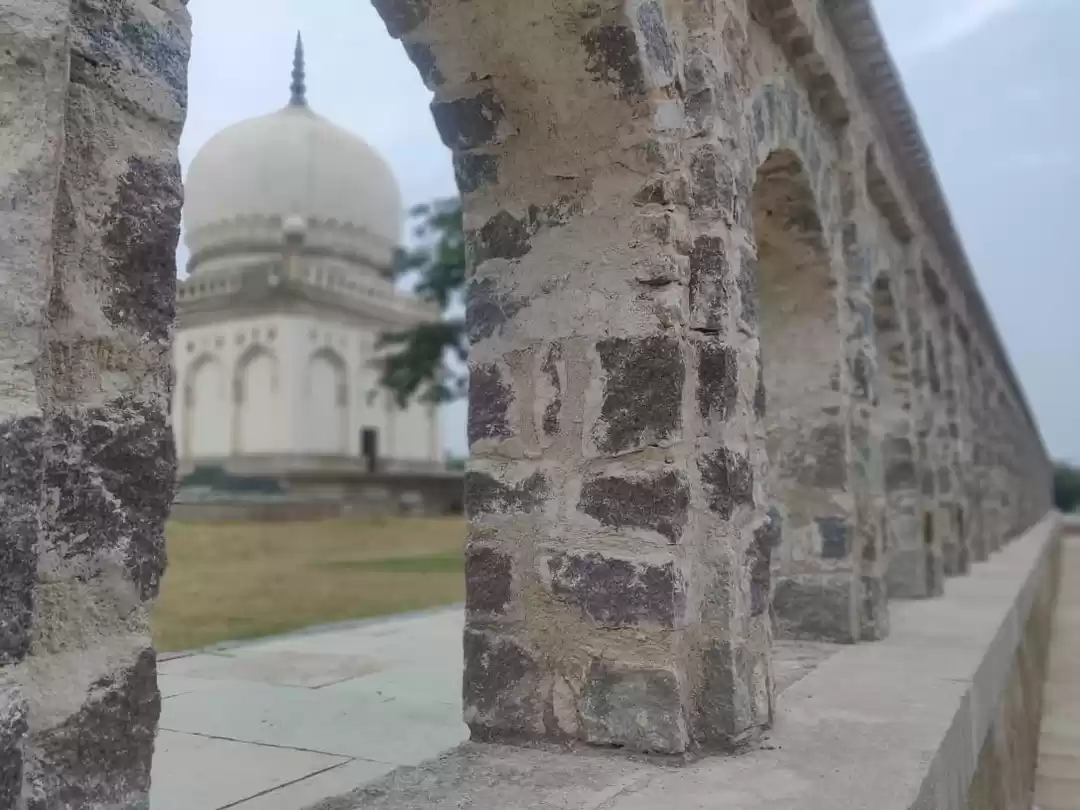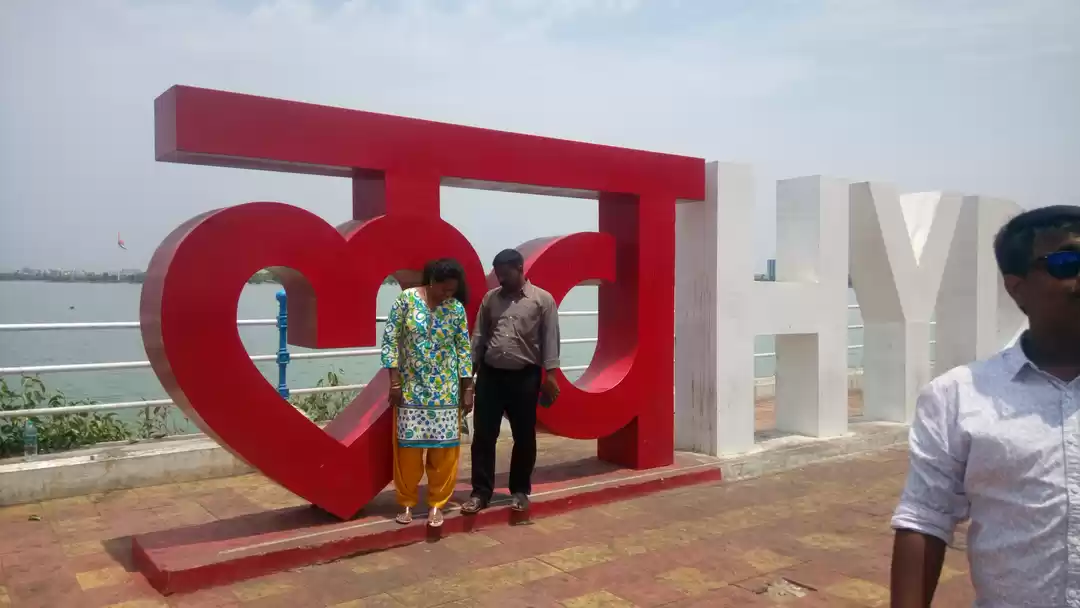Vacations again! And we were eager to go to a new place. Dalai Lama once said,”Once a year, go some place where you’ve never been before”. It’s my favourite quote. I do believe there is nothing more interesting and exciting than visiting a new place . Our destination this time was the city of Nizams. It may not be a great idea for many to spend holidays in a highly populated city the fourth most populous city of India) but the historical charm – (the stories of Nizams, the acoustic wonders of Golconda, the legendary Hyderabadi Biryani tales and the Salar Jung Museum pulled us to Hyderabad. From Pune, the Shatabdi Express took only eight hours to reach Secunderabad station. When Pune was shivering in cold for the last one month, we landed in a somewhat warmer city in the end of December.
In the last two years, we have visited two famous forts, the Daulatabad Fort in Aurangabad, Maharashtra and the Kangra Fort in Himachal Pradesh. Exploring forts though is a bit tiring, but still, the feel you get in the surroundings, in the ruins, in the dark passages, staircases or in front of a majestic architecture and listening to the unbelievable stories of the kings and emperors who once ruled from these bastions, are matchless.


Golconda fort too has its own grandeur. Remarkable use of acoustics in the fort to communicate messages is the major attraction. If you clap in the portico (a spot just under the dome) of the main entrance of Bala Hissar, it can be heard clearly in the Bala Hissar pavilion on the top of the hill. Also, the exceptional engineering skill in lifting water by Persian wheels to the top of the hill through intricate pipelines and storage in overhead tanks is worth mentioning.
Qutub Shahi dynasty were Persians by descent and because of which a strong Persian influence is seen throughout the fort. Large fountains, luxury baths are evidences of the luxurious lifestyle. Hard to believe, but separate outlets for hot and cold water were used in the bath tubs! A network of earthen pipes were used to supply water to the residents of the fort in different Mahals, gardens, fountains etc and even to the mortuary baths where the royals were given their last bath. This water was drawn from Durgam Cheruvu Lake, which was 5 km away from the fort. I wondered how the Royals planned such an efficient water supply system in an area of water scarcity! The water was used not only for daily work or agriculture but also to carry out the overall luxurious lifestyle, maintaining the gardens, operating fountains, baths etc. Qutub Shah rulers like many other benevolent kings, constructed many water tanks and lakes in Hyderabad, to name a few – the Satham Cheruvu, Ibrahipatnam Cheruvu, Nampally tank, Ma Saheba Tank, Hussain Sagar etc.
The Fort is 400 ft high, has eight entrances and surrounded by 10 km long wall. We entered through the Fateh Darwaza. We got a guide book with a rough sketch map of the fort and some details. My teenage daughter, the most enthusiastic of us, took hold of the guide book and literally guided us through the fort.It’s her interest in historical places that brought us to Hyderabad ,I must say.



The fort once built by Kakatiyas of Warangal, finally went in to the hands of Qutub Shahi dynasty. In between the Bahmani rulers were in power. The Mughal Emperor, Aurangzeb later annexed it to his empire from the Qutub Shahi Dynasty. With the fall of the Mughal Empire, Nizam-ul-Mulk Asaf Jah became an independent ruler in 1724 and hence forth the Nizams ruled over Hyderabad until AD 1948. In short, this is the history of Golconda fort. Nevertheless, Golconda was a great commercial centre for diamond trading and other precious stones. Traders from different countries came for trading in Golconda. The Golconda rulers developed it as a city with all the amenities, luxuries, spent money in constructing palaces and other monuments , as well as strengthening the fort with magnificent walls. The fort has three granite stone walls and the outer most wall is 17-34 feet wide and with a height of 60 feet!




We started exploring the fort from the right side of the entrance and crossed the barracks of the body guards, Nagina garden, Badi Baoli or the big well, the canal under the steps and finally took a big breath to climb the 360 steps of the steps of Bala Hissar!




Finally, we reached the top! The Baradari or the Darbar Hall (General assembly). It is a two storey structure with open terraces and audience halls for the Royals and the common man. You can get a full view of the city from the portico. No doubt this served as a spot to keep surveillance on the whole territory. Presently what we could see was the massive growth of concrete jungle which clearly defined the boundaries between the old and the new world.





After Baradari, we entered the Kilwat and Ranimahal complex.Beautiful and intricate arches adorned the walls of the Ranimahal. Now a days, a spectacular light and sound show illuminates the Mahal at night, but somehow we couldn’t manage our time for the show.



The ruins of Rani Mahal, the fountains, the decorative walls of the mahal, the baths, everything reveal the grandeur, style and elegance of Turkish splendour.



Coming out, we stopped by the Dad Mahal or the hall where the common man came with their grievances to put before the Royals. Cleverly designed arches concealed the sight of the Royals from the commoners. A specific spot was assigned for the commoner to stand and speak out their grievances in the hall which can be heard clearly by the King or Queen seated far off. It’s really amazing to experience such acoustics.



After a long walk of two hours, we almost completed the Fort tour. The Taramati mosque was in front of us. I am not sure whether it is actually the Bhagmati mosque or Taramati Mosque but Sultan Muhhamad Quli built it for his beloved to offer Namaz, despite strong opposition . She was believed to be his inspiration. Truly, it’s the tales of these legendary romances that make the history more interesting! Hoping to explore the city of Nizams in a more tangible way, our next destination was none other than an authentic chicken Biriyani expedition!
This post was originally published on Jayati's Blog.
Frequent searches leading to this page:-
hyderabad tour package from nashik, weekend getaways from hyderabad, tour packages near hyderabad, hyderabad to nepal tour packages, golconda fort hyderabad telangana india

















